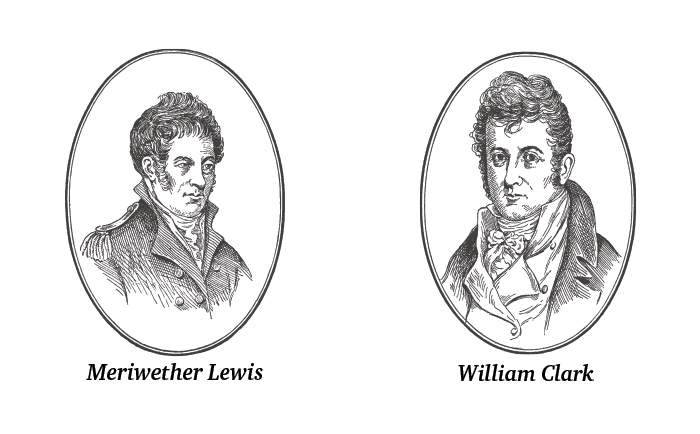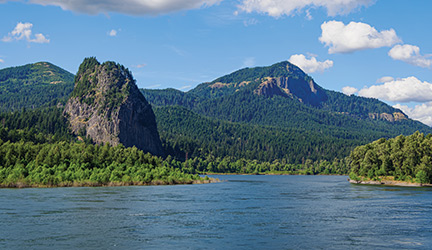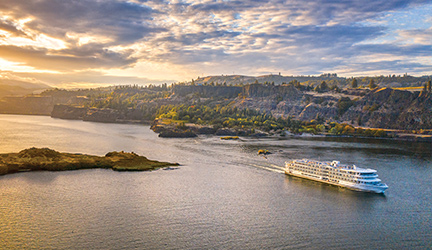The Lewis and Clark Expedition, also known as the Corps of Discovery, prepared to depart from near St. Louis to proceed up the Missouri River. On May 13, 1804, William Clark wrote, “Boats and everything complete, with the necessary stores of provisions and such articles of merchandise as we thought ourselves authorized to procure - though not as much as I think necessary for the multitude of Indians through which we must pass on our road across the continent.”
Departure of Corps of Discovery
Bearing the task from Thomas Jefferson to explore the mysterious West, Meriwether Lewis and William Clark gathered their crew—the Corps of Discovery—and set out on one of America’s greatest adventures.
As the group departed on May 14, 1804, expedition member Patrick Gass recorded his perspective on what "was to come on their journey into the unknown." This two-year journey, led by Lewis and Clark, ventured up the Missouri River and through the recent U.S. acquisition of the Louisiana Territory.

Mission Accomplished
During their travels west of the Rocky Mountains, Lewis and Clark encountered various Native American tribes and recorded valuable information about their customs, languages, and way of life. The expedition’s journals also recorded detailed observations of the flora and fauna of the region, as well as the region’s natural resources.
After an arduous trek across the snowy Rocky Mountains, the expedition proceeded down the Clearwater River, Snake River, and Columbia River. They reached the Pacific Ocean on November 15, 1805. Sergeant Patrick Gass wrote, “We are now at the end of our voyage, which has been completely accomplished according to the intention of the expedition, the object of which was to discover a passage by the way of the Missouri and Columbia Rivers to the Pacific Ocean; notwithstanding the difficulties, privations, and dangers, which we had to encounter, endure, and surmount.”
Impact on the Future
At the time of the expedition, the United States, Great Britain, Spain, and Russia claimed the region. Lewis and Clark’s exploration enhanced the United States' claim to the Oregon Territory, which included present-day Oregon, Washington, Idaho, and parts of Montana and Wyoming. The expedition’s success sparked further exploration and settlement. With their stone flints, compasses, and pick axes, packed the Corps of Discovery were ready to embark on their 8,000-mile undertaking.
Lewis and Clark’s Expedition: Then and Now
As the group tackled the Columbia and Snake Rivers, they faced constant challenges. Dangerous rocks, capsized canoes, and wet gear not only slowed the team down but resulted in illnesses. Today, with eight dam and lock systems, navigating the Columbia and Snake Rivers has thankfully changed since Lewis and Clark’s historic expedition. These lock and dam systems allow vessels to maneuver through these precious waterways.
Lewis and Clark visited fascinating locations on their journey. One being the impressive Mount Hood, which Clark described as “of conical form but rugged.” This geographic wonder is said to be volcanically active until around 1801—about five years before the Corps of Discovery arrived. As Oregon’s highest peak, Mount Hood is now home to Timberline lodge—a National Historic Landmark—and six ski areas.
The Lewis and Clark expedition passed through the Columbia River Gorge for seven days in late-October 1805. Inspired by the scenic landscape described this area, Clark wrote, “the mountains are high on each side, containing scattering pine white oak.”
Lewis and Clark Sites:
- Mt. Hood
- Columbia River Gorge
- Fort Clatsop
- Multnomah Falls
- Town of Hood River
- Sacajawea State Park
Savor the breathtaking scenery and riveting story of Lewis and Clark as you follow the pathway of these incredible explorers on our Columbia & Snake Rivers itineraries.


